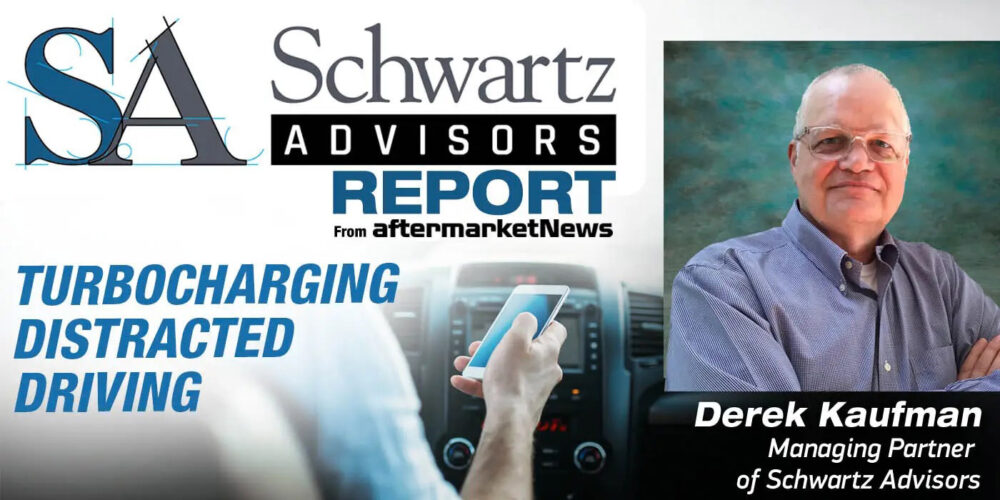In 1980 in the United states, a total of 51,091 people died in 45,284 fatal crashes involving 63,485 vehicles. 22.5 people of every 100,000 people in the country were killed on America’s highways.
Over the next 30 years, all kinds of technologies were introduced to reduce these numbers. Airbags, ABS brakes, electronic stability control, adaptive cruise control, other early level ADAS, improved tires and many other items helped drive down the accident rate. By 2011, the fatality rate was down to 32,479, with 29,867 crashes involving 44,119 vehicles. 10.5 people of every 100,000 people in the country were killed on the highway, despite higher congestion, higher population and more powerful cars.
Then, the numbers reversed course and started climbing again despite the addition of new ADAS technologies like front and rear emergency braking, lane departure mitigation, blind side detectors and mandatory rear facing cameras.
A total of 42,939 people died in fatal motor vehicle crashes in 2021. These deaths occurred in 39,508 crashes involving 61,332 motor vehicles. The death rate rose to 12.9 deaths per 100,000 population in the US.
What happened?
First, the Pew Research Center reports that 97% of Americans own cell phones and 85% own smart phones, up from just 35% when Pew first conducted its research in 2011. For many years, drowsy driving beat out drunk driving as the leading cause of accidents. Today, distracted driving is, by far, the number-one reason for crashes and it is the prime suspect in the reversal of the safety figures.
There are other factors involved, of course. In Canada, a recent study showed marijuana-related traffic accidents that required treatment in an emergency room rose 475% between 2010 and 2021. In the US, 23 states currently allow marijuana use. In Colorado, which legalized marijuana in 2013, traffic deaths where drivers tested positive for marijuana increased 138% while all Colorado traffic deaths increased 29%. We will soon add another 27 states to those kinds of statistics as the balance of the country legalizes marijuana use. Funny how we railed against the scourge of cigarette smoking for so many years, and now we’re cool with everyone toking a doobie (A little old-timey terminology for you there). But I digress.
Technology can work against us, as well. I would argue that the flat-screen displays and cabin-wide dash displays of newer cars are contributing to loss of focus. The seconds required to scan across them translate into hundreds of feet of travel at highway speeds and reduced reaction time to changing events.
Now enter the autonomous vehicle (AV). It is touted as the ultimate solution to traffic safety. My fear is that AV technology will worsen traffic safety before it improves it.
We have experienced L1 and L2 driver assistance features for the last few years. Adaptive cruise, lane departure correction, front emergency braking, traffic sign recognition, blind spot detection and automatic parking have all added value to the driving experience, but I think one L2 feature is suspect – hands-free driving. It opens the door to more distracted driving and it will only get worse as we move into L3.
Level 3 autonomous drive controls vehicle operation without the driver’s input, but it will “summon the driver to return his or her attention if required.” An example might be moving your car through a traffic jam as you play a video game or attending to your children in the back seat as your car hurtles down a freeway at 70 mph. Mercedes announced its L3 certification at CES in 2023. Hyundai-Kia, Stellantis, BMW, GM and Honda are all moving L3 cars toward production. I don’t think they are doing us any favors. I think L3 is, as they say, “an accident waiting to happen.” L2 is bad enough, but I see L3 as the pinnacle of distracted driving. What might you be doing when your car summons you to return to active control? How long will it take? How many people on the highway are you endangering as you get around to assuming active control?
Level 4 might be better than L3 – it takes over all control of the vehicle but may have a steering wheel and control pedals to allow the driver to control the vehicle, if desired. Its autonomous technology is designed to handle all traffic situations and it has to demonstrate all the capabilities of L5, in which no driver controls are present and the car is fully under its own control. L5 brings us on-demand autonomous vehicles.
I understand the promise of full L5 autonomous operation. Many people who do not have access to public transportation will have AV cars come to them on request. The very old and the very young will have transportation options they never had before. Blind people and others with other mobility disabilities will look to AVs for transportation independence.
The people hoping for AV operation most are commercial fleet operators. Eliminating the cost and management requirements of human drivers is a complete game changer for Uber, Lyft, taxi companies and urban shuttles. Watch for vehicle manufacturers to buy their fleet management customers as L5 operation becomes more commonplace. No one cares that your AV is a Chevy, but GM can’t afford that lost brand equity. They have already formed their Brightdrop Division to bring automated electric carts and BEV vans to package delivery and will do the same with Transportation as a Service when the time comes.
When is that exactly?
My guess is that full L5 services will build coverage in the mid-to-later 2030s and ramp to common usage in the 2040s. There are, however, some proofs of concept that suggest some facets of L5 operation could come sooner:
May Mobility has been running AV shuttles and taxis for over a year in my hometown of Grand Rapids, MI. They are currently running with AVOs (autonomous vehicle operators whose goal in life is to not touch the steering wheel of the taxi as you marvel at the vehicle’s ability to handle all kinds of in-town traffic) and are seeing increasing acceptance by the public. John Dege, site manager in Grand Rapids, reported recently that the AV service has done more than 4,000 rides and is very satisfied with the trends in ridership.
Both Waymo and Cruise are running in Los Angeles and have also been focused on San Francisco and Phoenix. Watch for them to expand demonstrations to Houston and Dallas and Austin.
Pony.AI is growing nicely globally but has had a tougher time in the US. The company claims more than 600,000 miles of driverless operation and nearly 200,000 robotaxi orders and has partnered with Toyota to produce robotaxis in China. In California, however, the company’s operation certificate was pulled in 2022 due to too many of its demonstration human backup drivers having violations on their drivers’ licenses.
Similar to its moves to dominate battery electric cars, China is moving more aggressively on AVs than the US. The Western Securities research firm has estimated that 360,000 Navigation on Autopilot (NOA) (the new term for L3, 4 and 5 AVs) cars were produced in China in 2023. Those vehicles were not necessarily full L5s, but they have the capability to be fully self-driving.
Haomo.AI, has announced that it will place AVs in 100 Chinese cities by the end of 2024. Huawei Li Auto, XPeng and NIO, have all announced intentions to run AVs in hundreds of other cities in the same timeframe.
China is the world’s largest automotive market. The country has made intelligent connected vehicles and the introduction of L5 autonomous drive a long-term strategic focus. Its goal is to lead the emerging Transportation as a Service industry just as it leads BEV vehicle production today.
Stay tuned. We will struggle through the enhanced distracted driving of L3 vehicles, but ultimately AV operation will generate a whole new level of regulations and vehicle certifications resulting in more parts and service business for the aftermarket.














